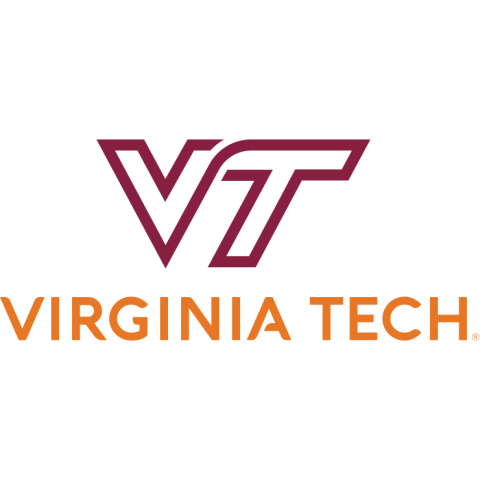
Teaching critical thinking is not enough – we must design for and assess it, too
When we strip away equations, facts and figures, what should remain with our students years after they graduate?
That question drives my work as an engineering educator and researcher. I’m not just interested in what students know during a final exam. I care about what they remember five years from now – in the workplace, in graduate school and in life. That long-term retention and application hinge on one central skill: critical thinking.
In engineering, critical thinking often hides in plain sight. It’s embedded in troubleshooting a system failure, evaluating a design trade-off or interpreting data under uncertain conditions. But here’s the challenge: while we all agree that critical thinking is essential, we often fail to define it clearly, teach it intentionally or assess it meaningfully.
The missing piece in teaching critical thinking? Assessment
Over the past several years my focus has shifted to the assessment of critical thinking. If we expect students to think critically, we must assess whether they do (or can) – and we need to design our teaching practices accordingly. Without assessment, critical thinking is an aspiration rather than a measurable learning outcome.
- Spotlight guide: critical thinking in teaching and research
- Is critical thinking the answer to generative AI?
- Fostering critical thinking with reflective journals
To do this well, I draw from established instructional models. My go-to is constructive alignment, a framework developed by John Biggs and Catherine Tang, co-authors of Teaching for Quality Learning at University. Its premise is simple but powerful: your intended learning outcomes, your assessment and your teaching methods must all be aligned.
For example, if I claim that one of my course outcomes is for students to “develop critical thinking skills”, I need to create assessments that allow students to demonstrate those skills – and teach in ways that support that development. Too often in education, especially in engineering, we expect students to develop skills such as teamwork or critical thinking without teaching them how. We assume they’ll pick it up along the way. That assumption doesn’t serve them – or us.
Start small, stay focused
One piece of advice I always give to faculty is: don’t try to overhaul your entire course. Take it one step at a time. Start with one outcome. One assignment. One module. Choose a topic that students historically struggle with and ask: what could I do differently here? How might I align my outcome, assessment and teaching activity to cultivate critical thinking?
For example, instead of asking students to solve a standard equation, I might give them a scenario with incomplete data and ask them to justify a design decision. This invites them to wrestle with ambiguity, a hallmark of critical thinking, and to apply knowledge rather than merely recall it.
Real-world support structures
You don’t need to start this work from scratch. If you’re a faculty member trying to implement these ideas, lean on your university’s centre for teaching and learning for support. These centres are often underused hubs of pedagogical expertise. You can also tap into open-access teaching resources, including online repositories, published rubrics and, yes, even YouTube.
If time is a constraint, and it usually is, collaborate. In a graduate course I teach on assessment in engineering education, I pair my students with engineering faculty across the college. Each graduate student acts as a teaching consultant: observing a course, reviewing materials and offering evidence-based recommendations. Faculty members have told me that they’ve implemented multiple suggestions as a result. It's a win for everyone.
Barriers to implementing critical thinking as a learning outcome
Let’s be honest: large class sizes and limited resources make the work of developing your students’ capacity for critical thinking harder. If you’re teaching 300 students, you probably can’t assign individual essays or grade open-ended design projects weekly. But you can pilot a single critical thinking activity. You can try a peer assessment method. You can use a rubric that targets critical thinking dimensions such as reasoning, analysis or judgement.
Another common barrier is student resistance. Students, like the rest of us, don’t always welcome change. But I’ve found that if you explain why you’re doing something differently – if you tell them you’re doing it to better support their learning – they might surprise you with their openness. Solicit their feedback. They’ll tell you what worked and what didn’t.
The role of AI and future thinking
The rise of generative AI tools has only heightened the need for critical thinking. Today’s students have unprecedented access to information and automation. They don’t need us to teach them how to find answers. They need help learning how to question those answers, evaluate them and adapt them to complex real-world problems.
I’m no longer interested in whether students can write a loop in Python. I’m interested in whether they understand what that loop does, why it matters and how to modify it for a new purpose. That shift in focus changes how I teach – and how I assess.
Placing critical thinking as a foundational learning skill
Critical thinking is not just another skill to check off a list. It is the foundation for lifelong learning and responsible professional practice. But we can’t just tell students to “think critically” and expect it to happen. We must design for it, teach for it and assess for it.
My advice: start small, stay aligned, collaborate where you can, and never assume you must go it alone. There is expertise on your campus – in teaching centres, in education departments and even in your own classroom. The first step is to ask a simple question: what do I want my students to be able to do? The rest flows from there.
Nicole Pitterson is associate professor in the department of engineering education at Virginia Tech.
If you would like advice and insight from academics and university staff delivered direct to your inbox each week, sign up for the Campus newsletter.




